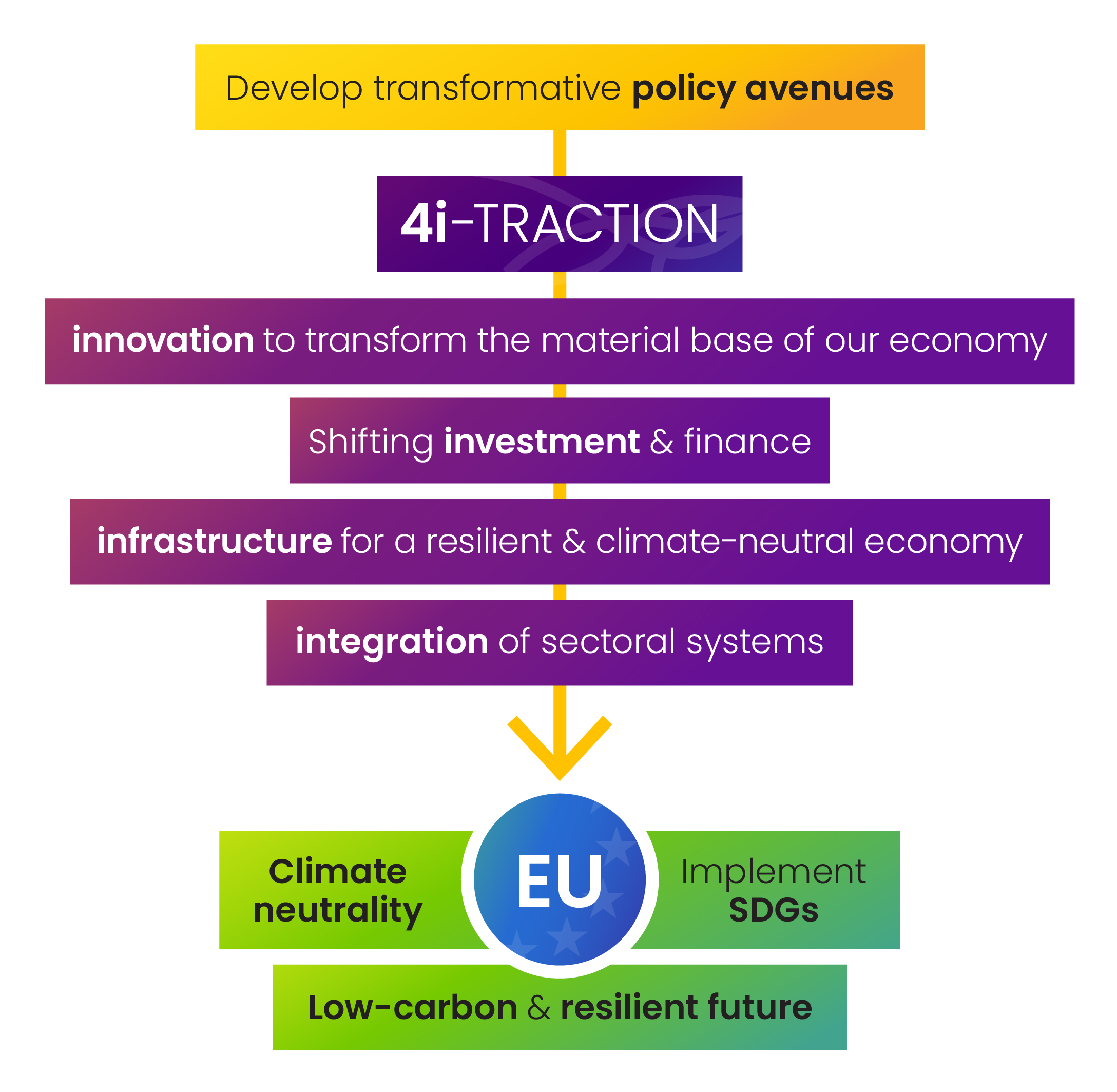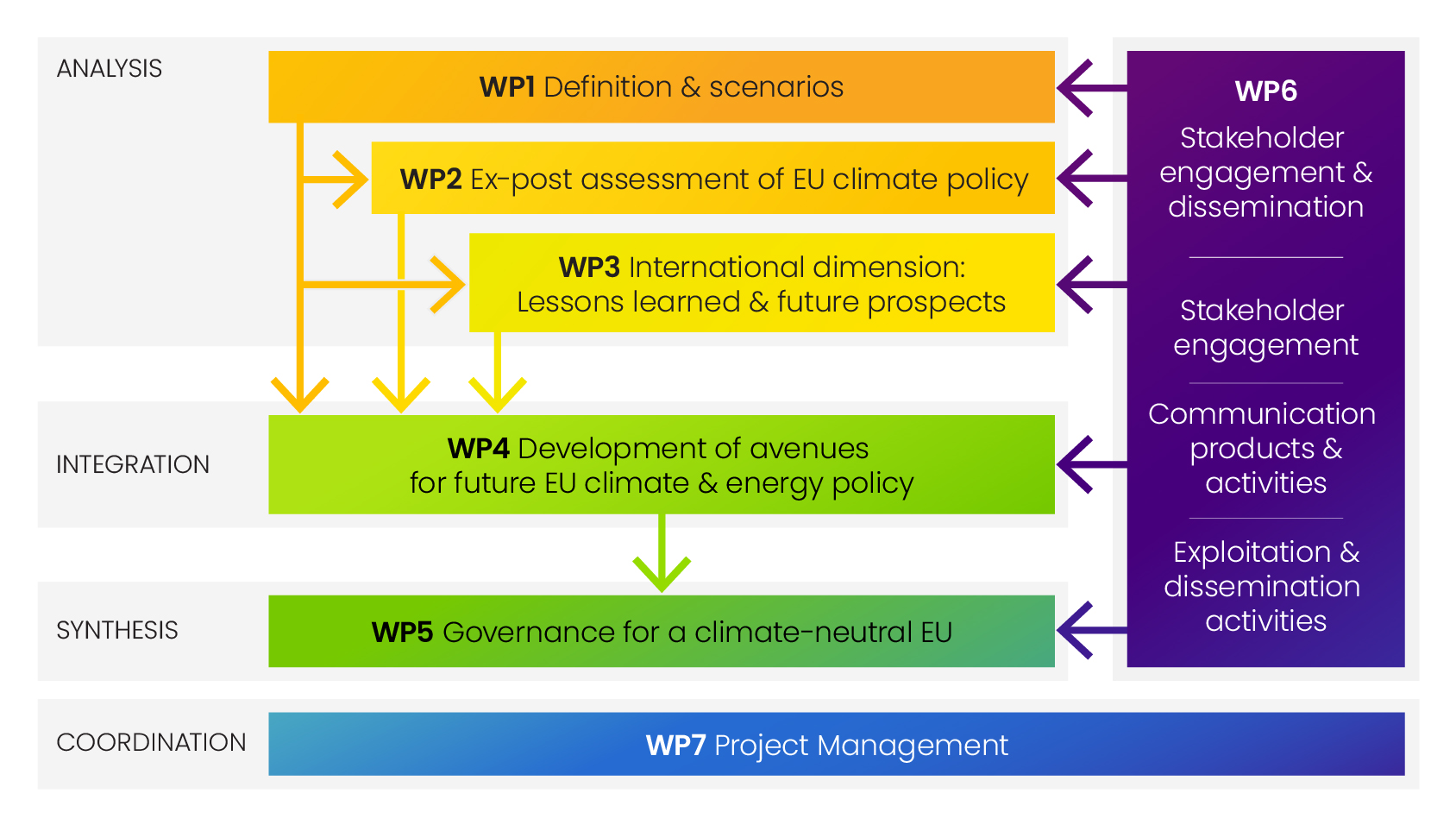About the project
The 4i-TRACTION project brought together nine partners from seven European countries: Vrije Universiteit Brussel (Belgium), Ita-Suomen Yliopisto (Finland), I4CE (France), Climate Analytics, Ecologic Institute (Germany), CE Delft, Wageningen University (Netherlands), WiseEuropa (Poland), Universidad De Vigo (Spain). It analysed what transformative EU climate policy could look like. Based on a stock-take of existing climate policies and their performance, it spelled out a number of policy avenues and develop an overarching governance framework for EU climate and energy policies. In doing so, the project described how the EU policy-mix needs to evolve in the 2020s to set course for climate neutrality by 2050. It took the realities of EU policymaking as its point of departure - from the European Green Deal to the post-Covid-19 recovery efforts. This also encompassed a thorough analysis of the factors that contributed to the achievement of the EU’s 2020 climate targets, supported by an assessment of key climate policies and their implementation in seven Member States. The analysis was structured around four cross-cutting core challenges, the "4 i's":
targets, supported by an assessment of key climate policies and their implementation in seven Member States. The analysis was structured around four cross-cutting core challenges, the "4 i's":
- fostering breakthrough innovation,
- shifting investment and finance,
- rolling out the infrastructure for a climate-neutral and resilient economy, and
- integration of solutions across sectors.
This structure reflects that a systemic transformation will need to evolve beyond sectoral policy approaches. Incorporating scientific insights and policies from outside the EU as well as examining how the EU's efforts interact with those of other countries, the project also looked beyond EU borders. The analysis was grounded in science but also aligned with the EU's dynamic political environment. To receive input, provide feedback, and validate conclusions, the project was closely engaged with stakeholders throughout its lifespan.
The project was structured around seven interlinked Work Packages:
- WP 1 provided the conceptual groundwork and the quantitative framework for subsequent steps by providing a definition and taxonomy of transformative climate policies and a quantitative scenario of what the transformation to a climate-neutral economy entails for the EU Member States.
- WP 2 provided an ex-post assessment of EU climate policy and the factors that have contributed to attaining the EU’s 2020 climate and energy targets.
- WP 3 combined both a backward-looking and a forward-looking perspective. It analysed international best practice examples of transformative climate policies outside the EU and developed recommendations how the EU could support such policies in its climate diplomacy and bilateral cooperation efforts.
- WP 4 developed a set of policy avenues to attain the EU’s climate goals and provided an ex-ante assessment of their expected impacts.
- WP 5 built on this by developing proposals for an EU climate governance framework that is capable of delivering transformative change.
- WP 6 coordinated the stakeholder engagement that was an integral part of the research activities in all WPs.
- Finally, WP 7 included the project management activities.
